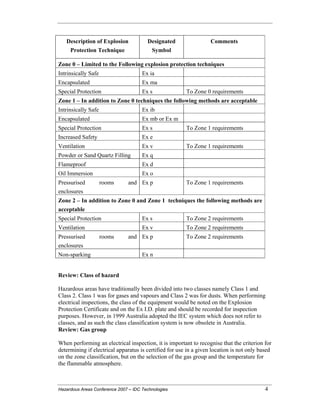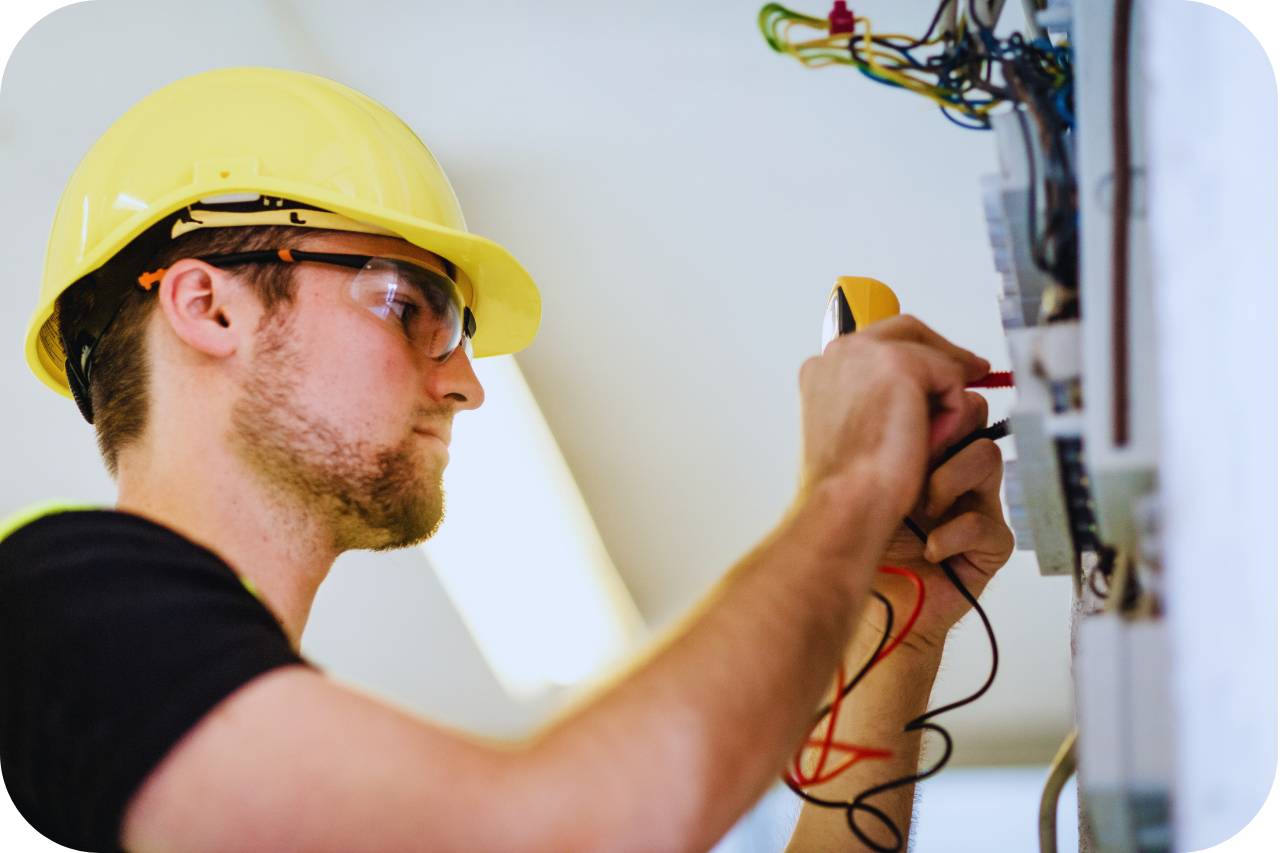Getting My Roar Solutions To Work
Getting My Roar Solutions To Work
Blog Article
An Unbiased View of Roar Solutions
Table of ContentsThe Basic Principles Of Roar Solutions The Best Strategy To Use For Roar SolutionsRoar Solutions for Dummies
In order to shield setups from a potential surge a technique of analysing and identifying a potentially hazardous area is required. The objective of this is to make sure the appropriate option and setup of equipment to eventually avoid a surge and to make sure safety of life.
(https://www.dreamstime.com/thomascarrillo4740_info)
No equipment ought to be set up where the surface temperature level of the tools is more than the ignition temperature level of the given hazard. Below are some common dust hazardous and their minimum ignition temperature. Coal Dust 380C 225C Polythene 420C (melts) Methyl Cellulose 420C 320C Starch 460C 435C Flour 490C 340C Sugar 490C 460C Grain Dust 510C 300C Phenolic Resin 530C > 450C Aluminium 590C > 450C PVC 700C > 450C Residue 810C 570C The likelihood of the hazard existing in a concentration high enough to cause an ignition will vary from location to location.
In order to categorize this threat an installation is divided into locations of danger depending upon the quantity of time the hazardous is existing. These areas are referred to as Areas. For gases and vapours and dirts and fibres there are three areas. Area 0 Zone 20 A harmful environment is extremely likely to be existing and might exist for extended periods of time (> 1000 hours annually) and even continuously Area 1 Zone 21 A harmful environment is possible yet not likely to be present for lengthy durations of time (> 10 450 C [842 F] A category of T6 implies the minimal ignition temperature is > 85 C [185 F] Dangerous location electric equipment possibly created for use in greater ambient temperatures. This would certainly suggested on the rating plate e.g. EExe II C T3 Ta + 60C( This suggests at 60C ambient T3 will certainly not be exceeded) T1 T1, T2, T3, T4, T5, T6 T2 T2, T3, T4, T5, T6 T3 T3, T4, T5, T6 T4 T4, T5, T6 T5 T5, T6 T6 T6 A T Class rating of T1 suggests the optimum surface temperature level produced by the tool at 40 C is 450 C. Presuming the associated T Course and Temperature ranking for the devices are appropriate for the location, you can always make use of an instrument with a more strict Division score than needed for the area. There isn't a clear solution to this concern sadly. It truly does depend on the sort of tools and what repair services need to be accomplished. Tools with particular examination treatments that can not be carried out in the area in order to achieve/maintain 3rd celebration ranking. Should return to the factory if it is prior to the devices's solution. Area Repair By Authorised Worker: Complicated screening may not be needed however certain treatments may need to be complied with in order for the tools to maintain its 3rd party score. Authorized personnel should be utilized to do the job correctly Repair work have to be a like for like replacement. New part must be thought about as a straight substitute calling for no unique screening of the tools after the repair is complete. Each piece of devices with a hazardous rating must be reviewed independently. These are described at a high level below, but also for more in-depth info, please refer straight to the standards.
The 45-Second Trick For Roar Solutions
The tools register is a thorough database of tools records that consists of a minimum set of areas to identify each thing's place, technological criteria, Ex classification, age, and ecological data. This details is vital for tracking and handling the equipment successfully within hazardous locations. In contrast, for regular or RBI tasting assessments, the grade will certainly be a mix of Comprehensive and Close examinations. The ratio of Thorough to Close assessments will certainly be figured out by the Tools Risk, which is examined based on ignition risk (the chance of a source of ignition versus the likelihood of a combustible ambience )and the harmful area classification
( Zone 0, 1, or 2). This variant will certainly likewise affect the resourcing needs for work preparation. When Whole lots are specified, you can create tasting plans based on the sample size of each Great deal, which describes the variety of arbitrary tools things to be examined. To figure out the called for example dimension, 2 aspects need to be examined: the size of the Great deal and the group of examination, which indicates the degree of effort that need to be applied( lowered, normal, or boosted )to the inspection of the Great deal. By combining the category of examination with the Lot dimension, you can then establish the suitable rejection criteria for an example, meaning the allowed number of defective products discovered within that sample. For more details on this procedure, please refer to the Power Institute Standards. The IEC 60079 standard recommends that the maximum period in between inspections ought to not exceed 3 years. EEHA inspections will additionally be carried out beyond RBI projects as part of scheduled maintenance and equipment overhauls or repair work. These inspections can be credited toward the RBI example dimensions within the affected Whole lots. EEHA inspections are conducted to determine faults in electric devices. A heavy racking up system is essential, as a solitary tool might have multiple faults, each with varying degrees of ignition risk. If the mixed score of both assessments is less than two times the fault score, the Whole lot is considered acceptable. If the Great deal is still taken into consideration unacceptable, it has to go through a full examination or reason, which may activate stricter evaluation methods. Accepted Great deal: The root causes of any mistakes are recognized. If a typical failing setting is located, added equipment might call for maintenance. Faults are classified by intensity( Safety and security, Honesty, House cleaning ), making sure that immediate concerns are evaluated and attended to quickly to minimize any kind of influence on safety and security or procedures. The EEHA database need to track and videotape the lifecycle of mistakes together with the rehabilitative activities taken. Implementing a robust Risk-Based Assessment( RBI )approach is essential for making sure conformity and safety and security in managing Electrical Equipment in Hazardous Areas( EEHA) (eeha courses). Automated Fault Scoring and Lifecycle Administration: Effortlessly handle mistakes and track their lifecycle to improve evaluation accuracy. The introduction of this support for risk-based evaluation even more enhances Inspectivity's setting as a best-in-class service for regulatory compliance, as well as for any asset-centric inspection use instance. If you are interested in learning more, we invite you to ask for a demo and uncover just how our option can change your EEHA administration processes.
The Best Strategy To Use For Roar Solutions

In regards to explosive risk, a dangerous area is a setting in which an eruptive environment is present (or might be anticipated to be present) in amounts that call for unique preventative measures for the building and construction, installment and use tools. eeha training. In this post we discover the difficulties dealt with in the workplace, the danger control measures, and the needed competencies to work safely
These materials can, in particular conditions, form explosive ambiences and these can have significant and awful effects. Many of us are acquainted with the fire triangle remove any one of the three aspects and the fire can not take place, yet what does this mean in the context of hazardous areas?
In many circumstances, we can do little concerning the levels of oxygen in the air, however we can have substantial impact on resources of ignition, as an example electric devices. Harmful locations are recorded on the unsafe location category illustration and are recognized on-site by the triangular "EX-SPOUSE" indicator. Below, among various other vital details, areas are divided right into three types depending upon the risk, the probability and duration that an explosive environment will exist; Zone 0 or 20 is deemed the most dangerous and Zone 2 or 22 is considered the least.
Report this page